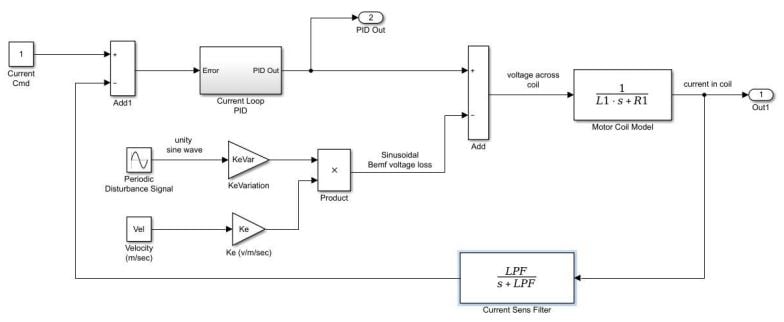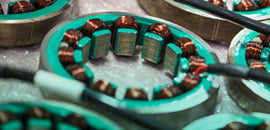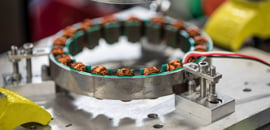Summary and Conclusions
Optimizing performance of a slotless motor driven by a PWM voltage drive requires knowledge of how a resistive and inductive load behaves under varying applied voltage. Understanding the tuning principals of the proportional and integral controlled current loops is also essential for getting the most out of the slotless motor system.
This paper discusses some basic motor and drive concepts including pole count, inductance, and PWM voltage. The difference between a slotless and slotted rotary motor was discussed and it was noted how slotless motors typically have low inductance. The fast RL time constant of a slotless motor, in combination with a PWM drive, creates current ripple that can be a significant contributor to dissipated power in a motor. Different approaches to reduce current ripple, including PWM rate, and added inductance were discussed. Increasing the PWM rate or adding inductance were both shown to be highly effective in reducing current ripple. Three common PWM drive manufacturers were tested and compared for current ripple and all were found to be similar in their performance, but not all offered an 80 KHz PWM rate.
Time domain current loop tuning was discussed and it was shown how current loop proportional and integral gains affect rise time and overshoot. Advanced frequency domain tuning was discussed where it was shown how P and I gain shape the gain and phase vs. frequency curves. The take away from frequency domain tuning is that changing I gain alters only the low frequency part of the gain curve, so as to not adversely affect any resonances in the system at higher frequency. This benefit of increased low frequency gain is at the expense of lost phase at the targeted bandwidth, so care must be taken to not destabilize the loop when optimizing I gain.
The concept of maximizing I gain was taken to a simple motor example, where a voltage disturbance was an input to the commanded voltage across a resistive and inductive load (i.e. a motor). It was shown that the current error was reduced by a factor of 2 with optimizing I gain tuning.
PWM rate, additive inductance, and current loop tuning are all “tools” one can use to optimize performance of slotless motors with PWM drives. Using these techniques will enhance the inherent smooth motion benefit of a slotless motor.























